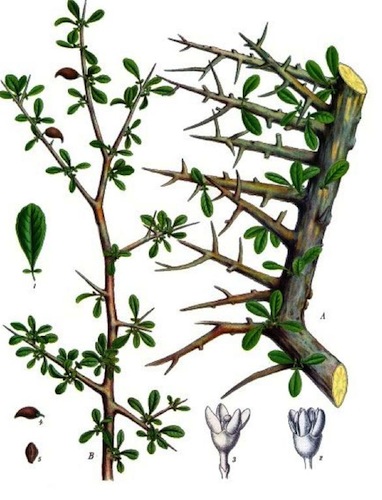Myrrh

Myrrh oil is extracted from Commiphora myrrha (also known as Commiphora molmol) of the Burseraceae family. Commiphora molmol is a small tree that can grow up to 5 meters (16 feet) high with light bark and knotted branches, few leaves and small white flowers. It is native to Somalia, Arabia and Yemen. When the bark is cut, the gum resin exudes as a pale yellow liquid, which dries into reddish-brown lumps the size of a walnut from which the oil is distilled.

Myrrh oil is extracted by steam distillation of the oleoresin-gum (crude myrrh) and yields 3 – 5 %. The main chemical components of myrrh oil are a-pinene, cadinene, limonene, cuminaldehyde, eugenol, m-cresol, heerabolene, acetic acid, formic acid and other sesquiterpenes and acids.

The therapeutic properties of myrrh oil are anti-catarrhal, anti-inflammatory, antimicrobial, antiphlogistic, antiseptic, astringent, balsamic, carminative, cicatrisant, emmenagogue, expectorant, fungicidal, sedative, digestive and pulmonary stimulant, stomachic, tonic, uterine and vulnerary.



